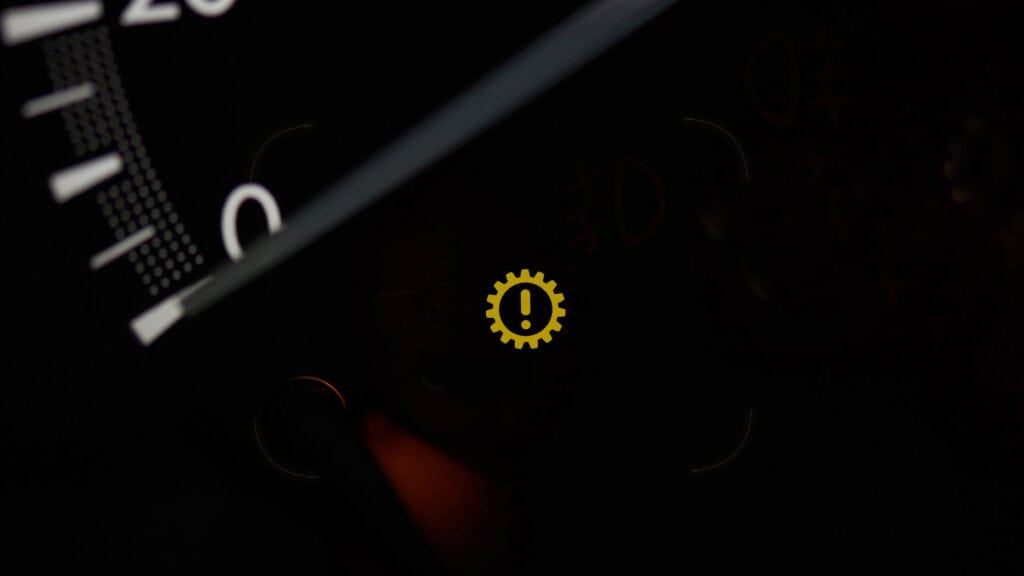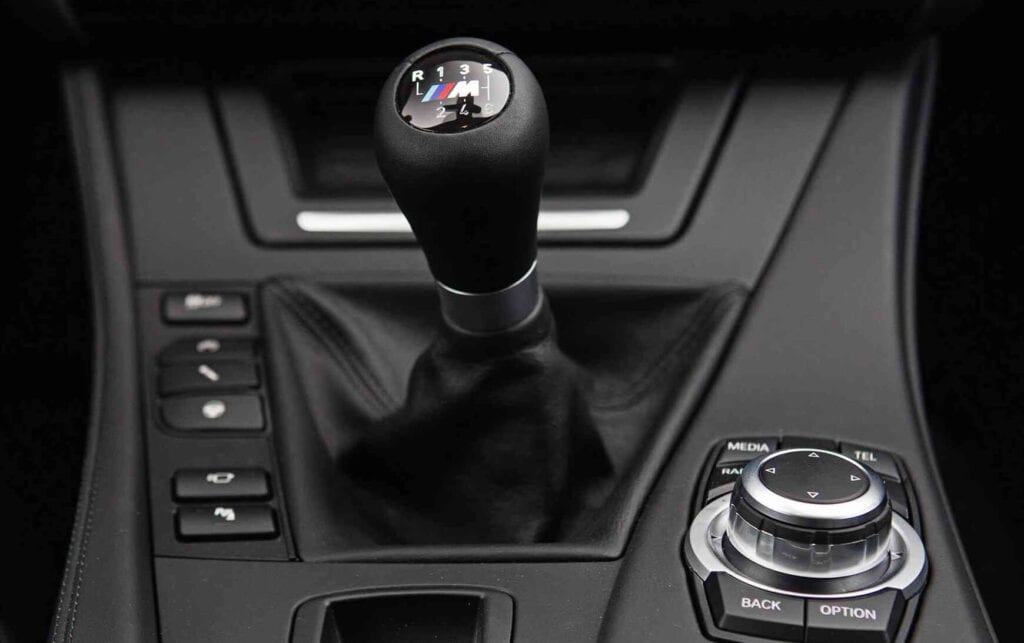Shifting into Gear with Transmission Systems
Ah, the vehicle’s transmission system— the unsung hero behind your car’s smooth moves on the road. It’s essentially the control tower of your vehicle’s engine, dictating how much power goes to your wheels. Yet, despite its pivotal role, the transmission system is often shrouded in mystery. Worse, its warning light is frequently ignored. Spoiler alert: You should never take that light lightly.

The Red, Yellow, and Orange of It: Decoding Transmission Warning Light Colors
• Yellow: Yellow is often the first line of defense, warning you that something is amiss but not yet critical. Think of it as your car’s way of whispering, “Hey, might want to check this out soon.”
• Yellow Light Situations: A yellow light doesn’t always mean transmission trouble; it could also signify overheating or fluid-related issues. However, prolonged yellow warnings can escalate, so timely action is advised.
• Red: When you see a red light, it’s your car screaming for immediate action. Ignoring a red warning light can result in severe damage and compromise your safety on the road.
• Red Light Scenarios: A red light can indicate issues like major fluid leaks, significant overheating, or mechanical failures that are cause for immediate concern.
• Orange: Orange lights are less common but serve as a midpoint between yellow and red. They’re serious enough to warrant prompt action, but not typically a sign of imminent disaster.
• Color Codes and Models: The color and meaning of the transmission light can vary by car model and manufacturer, so always consult your vehicle’s manual for specifics. Some cars may even use flashing lights to indicate different levels of urgency.
• Intermittent Lights: Sometimes the lights may flicker or change colors, reflecting fluctuating issues. Such cases can be confusing but should never be ignored.
Being vigilant about these colors can make the difference between a simple repair job and a complete transmission overhaul. Each color is a distinct form of communication from your vehicle, and understanding this language is key to effective and timely maintenance.
Check Transmission vs. Engine Light: A Crucial Difference
First off, let’s talk about the transmission light. This enigmatic dashboard character is a direct line to your transmission system, almost like a focused counselor dealing specifically with your gears and fluid mechanics. If you see it come on, you’re likely dealing with an issue that pertains directly to your transmission—think fluid leaks, overheating, or worn-out components. The light is a sniper, accurately zeroing in on transmission-specific issues.
On the other side of the spectrum is the engine light, a more generalized guru for a multitude of potential issues that could go wrong in your engine’s management system. From the oxygen sensor to the gas cap, this light signals problems that may or may not directly relate to your transmission. Understanding this difference is vital, as treating a transmission problem as a minor engine issue—or vice versa—could result in costly mistakes and serious mechanical failures.
Common Culprits: Reasons Why Your Transmission Light Might Be On
There are several culprits behind that ominous light:
• Fluid Leaks: Fluid leaks can be stealthy but are significant reasons behind a lit transmission light. Leaks compromise the hydraulic pressure, making it difficult for the transmission to shift gears smoothly.
• Sensor Malfunctions: Modern cars come equipped with a plethora of sensors. When these malfunction, they can trigger a warning light even when there’s nothing wrong. Conversely, faulty sensors might also fail to alert you of real issues.
• Overheating: Excessive heat can degrade your transmission fluid and impair its effectiveness. An overheated system can trigger your warning light and can cause long-term damage if ignored.
• Worn-Out Transmission Components: Over time, gears, bearings, and gaskets can wear out. Such wear and tear can lead to an inefficient transmission system, hence triggering the warning light.
• Electrical Issues: Electrical problems, such as frayed wiring or poor connections, can interfere with your transmission system’s communication with the rest of the vehicle. This can erroneously activate your warning light.
• Software Glitches: Sometimes, it might just be a software glitch, especially in newer, computer-reliant vehicles. A simple software update might be needed to turn that annoying light off.
Can You Drive On? What to Do When the Light Comes On
The urge to continue driving when your transmission light comes on is not uncommon. Let’s be honest; no one likes the idea of being stranded on the side of the road. If the warning light is yellow, it serves as a cautionary tale, suggesting that you could likely make it to your destination but should seek professional help soon. In simpler terms, it’s your car saying, “Hey, finish what you’re doing but go see the doc afterward.”
However, a red light turns the dial up on the urgency factor. It’s your car frantically waving a red flag, saying, “Stop, now!” If you see a red transmission light, the best course of action is to pull over safely and shut down the engine. Driving any further might cause irreversible damage to the transmission, possibly leading to a full replacement, which is as painful for your wallet as it sounds.
Sensory Overload: How Sensors Can Affect Transmission
Sensors in your vehicle are like the referees of a soccer match; they keep an eye on every player, ensuring all is fair and flagging when something is amiss. These sensors, especially those monitoring the transmission, play a vital role. They’re attuned to various aspects, such as fluid levels and temperature, effectively acting as early warning systems for potential mechanical issues.
That said, sensors are not infallible; they can fail or give off false readings. Imagine a referee who keeps flagging offside when it’s clearly not—this confuses everyone, and the same applies to your car. A malfunctioning sensor may trigger your transmission light even when there’s no actual issue with the transmission system. It can also work the other way; a faulty sensor might not alert you to legitimate issues, like low fluid levels or overheating, leading to preventable damage. So if your transmission light is on, sensors are usually the first thing a mechanic will check, for good reason.

The Cost of Negligence: Potential Repairs and Their Price Tags
Ignoring that light might just become the most expensive oversight you’ll make:
• Fluid Replacement: Changing your transmission fluid is a straightforward but necessary procedure. Skipping it can lead to bigger issues. Cost: Around $100.
• Sensor Replacement: Replacing a malfunctioning sensor is usually not too hard on the wallet but is crucial for the proper functioning of your car. Cost: $200-$400.
• Gasket and Seals: Replacing leaky gaskets and seals is vital to maintain hydraulic pressure. It is an affordable fix if dealt with promptly. Cost: $150-$350.
• Rebuilding Transmission: When minor fixes don’t solve the issue, rebuilding your transmission system might be the only option. It is labor-intensive and can be costly. Cost: $1,500-$3,000.
• Complete Transmission Replacement: If the transmission system is beyond repair, a complete replacement will be needed, and it will hit your pocket hard. Cost: $2,000-$4,000.
Being proactive can save you from landing in the high-cost zone. The importance of regular check-ups and early intervention cannot be emphasized enough.
Master Your Transmission and Ride Smooth
The transmission system is not just a car part; it’s the gatekeeper of your driving experience. Warning lights are your vehicle’s language, urging you to listen and act. A stitch in time not only saves nine but also ensures a smooth, uninterrupted ride. If you’re facing persistent issues with your transmission system, consider leveraging mobile mechanic services like Uchanics in Canada, to keep your ride running as smoothly as possible.
